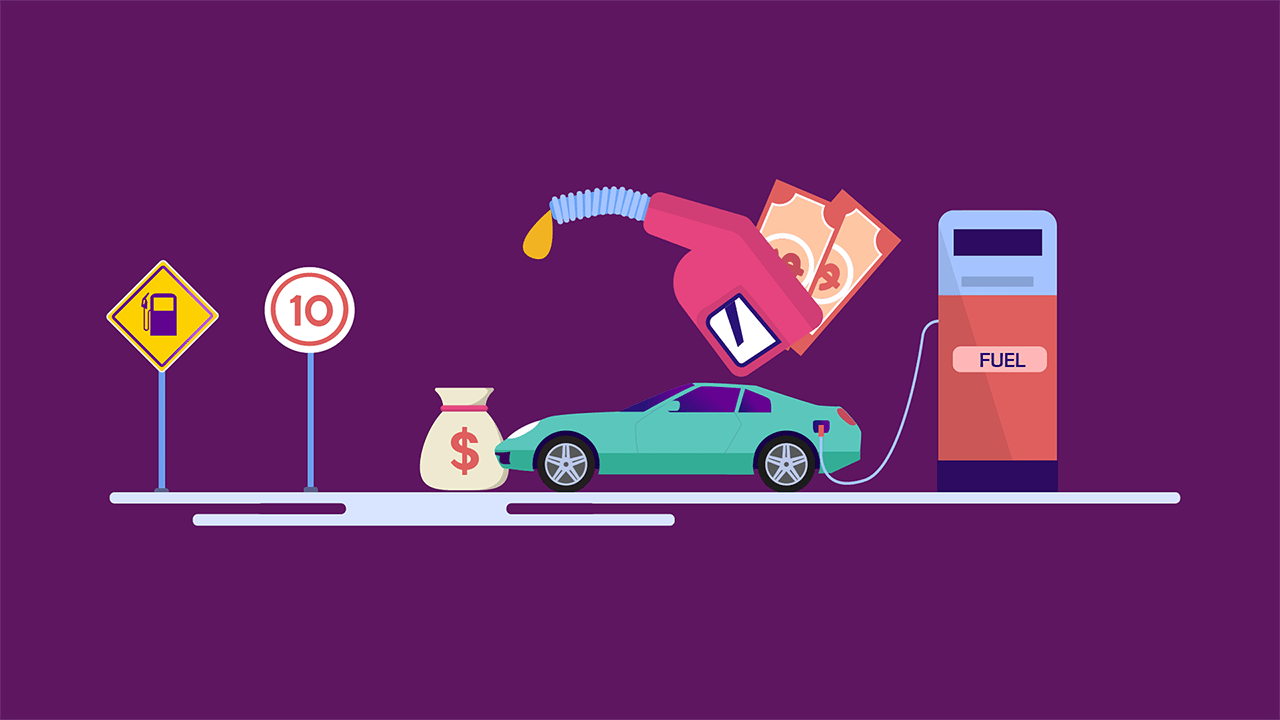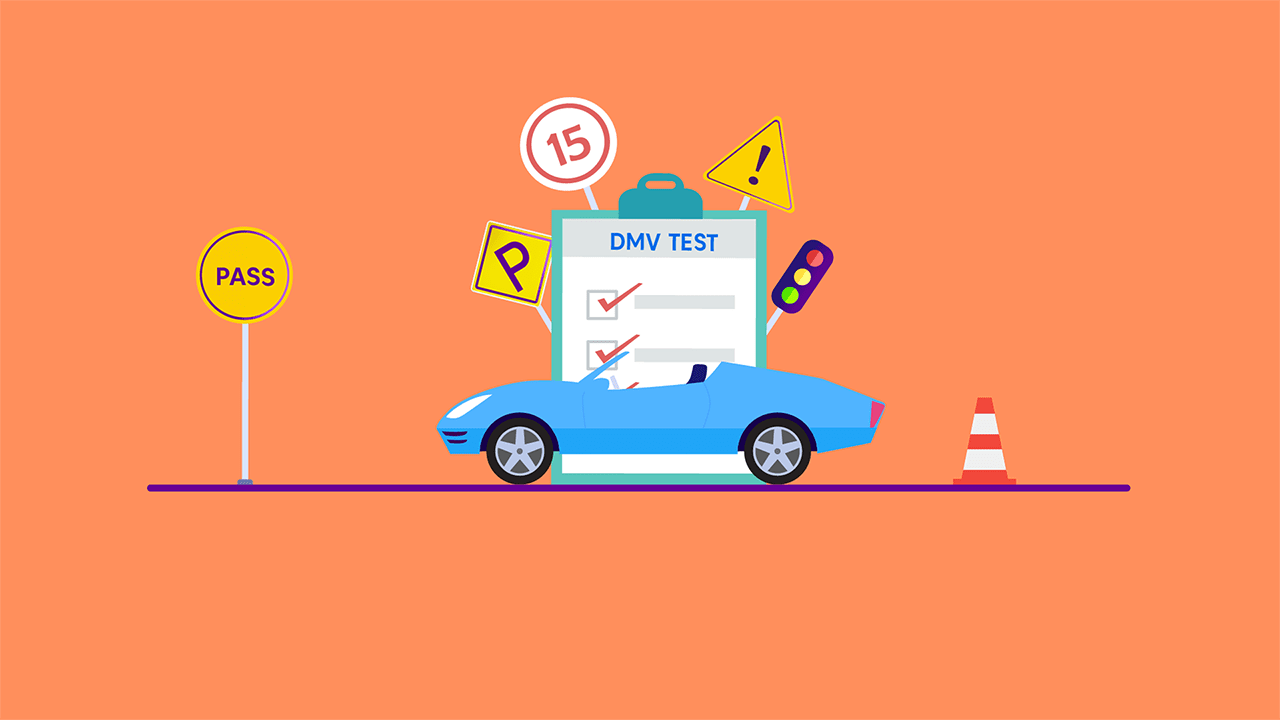Intro to U.S. Rules of the Road | General Driving Rules
By Umm e Hani on Apr 02, 2024Contents
- General Driving Rules in the US1
- Pay Attention to Road Signs and Traffic Signals
- Understanding Road Signs and Signals in the US
- Understanding Traffic Light Rules
- Staying Safe on the Road
- U.S. Traffic Tickets and Fines
- What If You're Pulled Over By The Police?
- Types of Roads in the US
- FAQ
When you're in a new country, it's essential to know the traffic rules of the road to stay safe. In the United States, while some road rules may differ between states and cities, several key regulations apply nationwide. These traffic laws and rules cover things like road signs, speed limits, and consequences for breaking the law, so it's important to familiarize yourself with them when driving in the U.S.
In the U.S., driving is seen as an adventurous and fun activity. Many Americans love going on "road trips," which are like driving adventures. Families, couples, or even individuals often take their cars for a spin on weekends or just for enjoyment.
Despite the relaxed driving vibe in the U.S., the traffic driving laws is strict, and breaking them can lead to significant problems. Police can arrest you, and the insurance system often involves civil lawsuits, even for minor incidents. So, it's essential to fully grasp the driving basic rules to respond confidently in stressful situations.
General Driving Rules in the US
Here are some important traffic rules to remember while driving in the United States:
- Steering wheels are on the left side of the car.
- Always drive on the right side of the road.
- White lines separate lanes of traffic going in the same direction.
- Dashed or broken lines mean you can change lanes when safe.
- Solid white lines mean stay in your lane.
- Yellow lines separate opposite-moving traffic.
- Dashed or broken yellow lines allow passing with caution.
- Never cross a solid yellow line.
- When turning left at an intersection, pass in front of oncoming left-turning cars.
- Use the left lane to pass other cars, not the right lane unless necessary.
- Always yield to pedestrians and stop when they're crossing.
- Never pass a school bus with flashing red lights.
- Watch out for bicyclists sharing the road.
- Be cautious in areas with bike lanes, check for bikes before turning.
- Pull over or stop at intersections to let emergency vehicles pass.
- Use your car horn for emergencies or when feeling unsafe, not excessively.
Pay Attention to Road Signs and Traffic Signals
In the United States, road signs and traffic lanes signals may be different from what you're used to in other countries. While some are easy to understand, others might be confusing if you haven't studied them. Also, traffic light rules may vary, so it's important to be aware of these differences before you drive. Stay safe on the road!
Understanding Road Signs and Signals in the US
Here are some important road signs and signals to know when driving in the United States:
Stop Sign
A red octagonal sign with "STOP" in white letters means you must come to a complete stop at the intersection. Not all intersections have stop signs for oncoming traffic, so be cautious when crossing or turning.
Yield Sign
A white or yellow triangular sign indicates you must give the right of way to oncoming traffic. Wait for the road to clear before proceeding.
One Way
A thin rectangular sign with a black arrow on a white background shows that you can only go in the direction indicated by the arrow.
Speed Limit
Look for vertical rectangular signs that display the maximum speed limit in miles per hour for a specific area. Speed limits can change, so pay attention.
Railroad Crossing
This sign often features a large X or crossed train tracks and may have the words "railroad crossing" or "RR." Watch for lights and sounds indicating an approaching train. If there are no lights, stop and check both ways before crossing.
Parking
Read parking signs carefully to ensure you are parking legally. Pay attention to time limitations, permit requirements, and handicapped parking spaces. Yellow-painted curbs usually mean no parking is allowed. Stay informed to drive safely!
Understanding Traffic Light Rules
Traffic lights in the US are typically equipped with red, yellow, and green lights:
Green Light
You can proceed through the intersection.
Yellow Light
Prepare to stop as the light is about to turn red.
Red Light
You must come to a complete stop and wait for the light to change.
Flashing Yellow Light
Proceed with caution.
Right Turn on Red
Unless a "NO TURN ON RED" sign is present, you can turn right at a red light after yielding to oncoming traffic.
Left Turn on Red
It's generally not allowed to turn left at a red light.
Remember, oncoming traffic has the right of way. Drive safely and follow these traffic light rules!
Staying Safe on the Road
Staying safe on the road is a priority in the US. Here are some important safety on the road rules to follow:
Seat Belts
Always wear your seat belt when driving or riding in a car.
Child Safety
Young children should be in car seats or booster seats and usually cannot ride in the front passenger seat.
No Drinking and Driving
It's illegal to drink and drive in all 50 states. The legal limit for blood alcohol concentration is usually 0.08%.
No Texting and Driving
Don't text and drive, and some states prohibit the use of handheld devices.
Headlights
Use headlights in bad weather and after sunset, and in many states, when using windshield wipers.
No Hitchhiking
Hitchhiking is generally illegal in the US. If you need help, call 911 for the police. Follow these rules to ensure a safe journey on American roads.
U.S. Traffic Tickets and Fines
Getting a traffic ticket in the US can happen for various reasons like parking violations, speeding, or running stop signs. The fines vary depending on the seriousness of the violation and local regulations. Sometimes you might not even realize you've been ticketed, as cameras are increasingly used for monitoring. For instance, if you pass a toll booth without paying, a camera will capture it and send a ticket to the vehicle's owner. If it's a rental car, the ticket cost will be added to your bill. It's a good idea to pay fines promptly, and in some states, you can even do it online.
What If You're Pulled Over By The Police?
If a police officer signals for you to pull over or is following you with lights on, immediately find a safe spot to stop on the side of the road. Stay in your vehicle unless instructed otherwise by the officer. Make sure your hands are visible and resting on the steering wheel. Keep your driver's license easily accessible and store your registration in the glove compartment for quick access.
Types of Roads in the US
There are various types of roads in the United States, each serving a specific purpose:
Local Roads
These roads run through small communities and neighborhoods. They are typically smaller in size with lower speed limits. While most are paved, some may be dirt or gravel.
Collector Roads
Collector roads provide access to businesses and connect different local roads. Speed limits on these roads can vary. Watch out for speed limit changes, especially when passing through small towns.
Arterial Roads
Arterial roads are found in urban areas and carry heavy traffic. They funnel traffic from collector roads onto major highways. Be attentive to traffic signals and signs on arterial roads.
Freeways
Freeways are high-capacity roads with limited traffic lights and higher speed limits. They offer faster travel within and between cities. On and off ramps connect freeways to arterial roads.
Tollways (Turnpikes)
Tollways may resemble freeways but require users to pay a toll for usage. Toll fees vary based on vehicle type. Carry cash and change or use a transponder device for automatic toll payment.
Tolls and Toll Violations
When using toll roads, you can pay tolls in cash or via a transponder device. Some lanes are designated for transponder users only. If you accidentally enter an automatic toll lane without a transponder, you must pay the toll to avoid violations and fines. Many toll authorities offer online payment options within a specific timeframe to settle toll violations without penalties.
These are just a few of the many drivers rules and regulations you should be aware of when driving in the United States. By using common sense and gaining a basic understanding of these rules, you'll soon understand why so many Americans enjoy embarking on road trips each year.
FAQ
How Must You React To A Flashing Red Traffic Light?
To a flashing red traffic light, you must come to a complete stop, just like you would at a regular red traffic light. Treat it as a stop sign.
How Far Ahead Should You Check Traffic Signals?
When road driving, you should check traffic signals well ahead, ideally looking at least 12 to 15 seconds ahead to anticipate and react to changing conditions safely.
What Should You Do In A Traffic Break?
In a traffic break, you should slow down and follow the vehicle in front of you at a safe distance while maintaining a steady speed. Traffic breaks are often used to control the flow of traffic during specific situations, such as road construction or emergency response.


